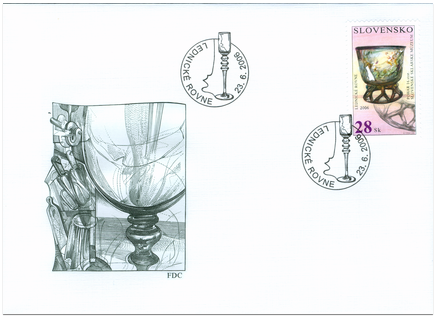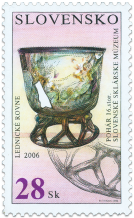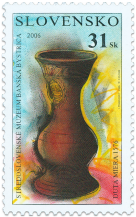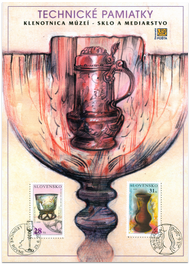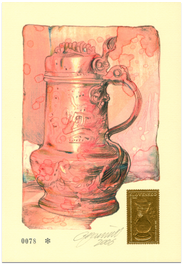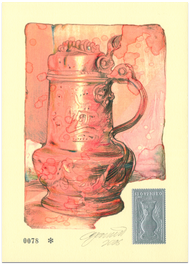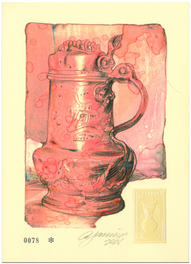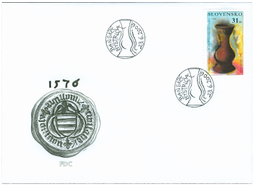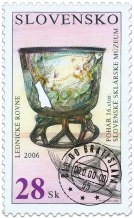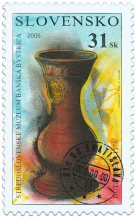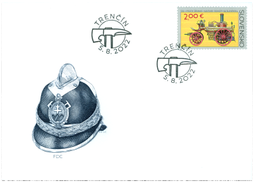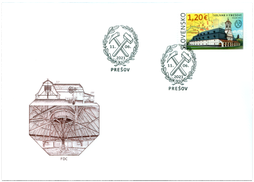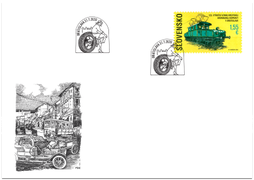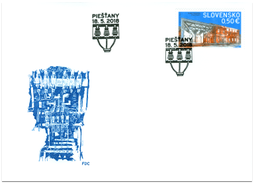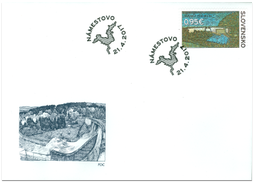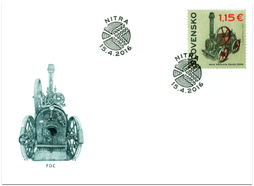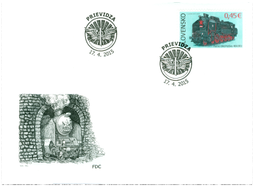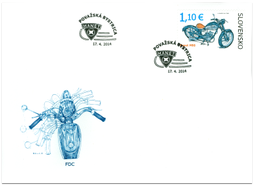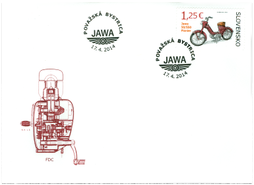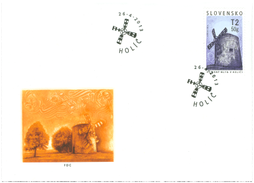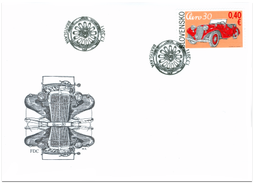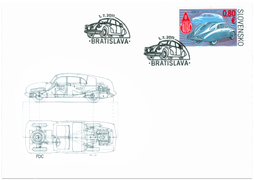FDC 381 Date of issue
23.06.2006 Face value
28.00 Sk Sell price
1.20 €
© Slovak Post, 2006 In the Renaissance, the glass-making industry in Slovakia was under the predominant influence of major glass manufacture centres. After the Sicilian-Neapolitan House of Anjou ascended the Hungarian throne (1301-1386), possibly the strongest influence came from the Venetian glass industry. The first Venetian glassmakers probably only moved to Slovakia in the early 15th century. Their historical presence in the region of Eastern Slovakia is well documented by the local village of Venecia, the first written mention of which is dated 1410. The Italian Renaissance developed especially around the royal court and the social milieu around it, among the aristocracy, gentry and affluent burghers during the reign of Mathias Corvin (1458-1490). It is well known that glasses, chalices and goblets were commonly imported directly from Venice during the sixteenth and seventeenth centuries. Besides the distinctive shape-stemmed goblets with bulbous or conical bodies of colourless glass (often with painted decorations), special shaped glasses were also made to order. The drinking glass made from blue cobalt glass found during an archaeological dig at 16 Kapitulská Street in Bratislava ranks among such custom-made glasses. The edge of the slightly conical body set on a cranked stem is picked out by a smelted dark-blue coating of cobalt fibre. The motif shown on the FDC represents the patterns created with unfinished glass fibre on the low stem of the glass. Peter Baxa
Show less© 2024 POFIS - Postal philatelic service. All rights reserved

